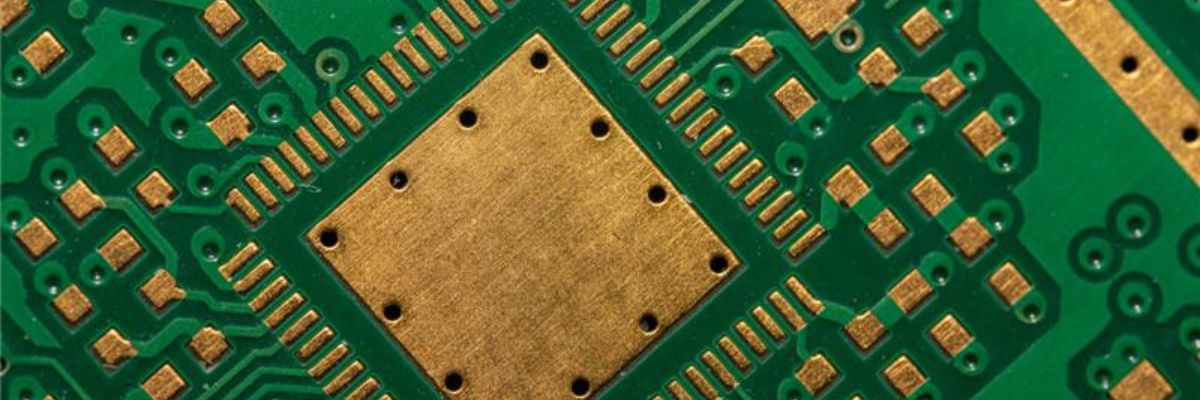The demand for small-sized PCB assemblies in high-frequency applications is on the rise. However, traditional boards experience signal degradation, noise, and electromagnetic interference at frequencies beyond 500 MHz. When signals pass through a PCB, various factors such as resistance, capacitance, and inductance can cause distortion or signal losses. To overcome this issue, high-frequency laminates are used as they are designed to operate at higher frequencies than conventional boards. High-frequency laminates are specialized materials engineered to support superior signal integrity, low dielectric loss, and stable electrical performance at high frequencies. This post explores what high-frequency laminates are, their unique advantages in PCB design, and how they enable engineers to meet the challenges of high-speed, high-frequency applications.
What Are High-Frequency Laminates? High-frequency laminates are advanced dielectric materials used in the fabrication of printed circuit boards (PCBs) to operate efficiently at radio frequencies (RF) and microwave frequencies, typically above 500 MHz. These materials help in minimizing signal loss and distortion which become critical as signal frequencies increase. High-frequency laminates offer low dielectric constants (Dk) and low dissipation factors (Df). These properties ensure better signal integrity, reduced electromagnetic interference (EMI), and improved thermal performance.
Benefits of Using High-Frequency Laminates
There are several advantages of high-frequency laminates, which makes them an ideal choice for engineers working on advanced communication, aerospace, and high-speed digital systems.
- Superior signal integrity: High-frequency laminates maintain consistent impedance control and signal propagation, which minimizes signal distortion and delay. This ensures accurate data transmission in high-speed and high-frequency circuits.
- Enhanced thermal performance: High-frequency laminates are engineered to withstand higher temperatures and provide better thermal conductivity, making them suitable for applications with demanding thermal cycles or continuous high-power loads.
- Low moisture absorption: These materials resist water ingress, ensuring stable dielectric properties even in humid or harsh environmental conditions. This feature is essential in aerospace, automotive, and outdoor telecommunication systems.
- Greater design flexibility: Many high-frequency laminate options support multilayer, rigid-flex, and hybrid constructions, allowing for more complex and space-saving designs without compromising electrical performance.
- Low Dielectric Loss: These materials exhibit a low dissipation factor (Df), which translates to less signal attenuation during transmission. This is critical in applications operating at frequencies above 1 GHz, such as RF antennas and radar systems.
- Improved reliability and longevity By reducing dielectric heating and signal degradation, high-frequency laminates contribute to longer-lasting and more reliable electronic assemblies, reducing failure rates and maintenance needs.
Applications of High-Frequency Laminates
Below are some of the most common and impactful applications of high-frequency laminates in PCB design.
- Aerospace and Defense: High-frequency laminates are usually found in radar systems, satellite communication, and avionics. Their high thermal and dimensional stability ensures reliable performance in extreme environments and mission-critical operations.
- Medical devices: Applied in diagnostic imaging systems such as MRI and CT scanners for offering low signal distortion and high reliability.
- Automotive electronics: These are essential for Advanced Driver-Assistance Systems (ADAS), radar sensors, and vehicle-to-vehicle (V2V) communication. They deliver high-frequency signal accuracy for safety-critical features.
- High–speed digital equipment: Used in servers, high-performance computing (HPC), and networking equipment., these high frequency laminates support low-latency, high-bandwidth data processing with exceptional signal integrity.
- Telecommunication & 5G networks: High frequency laminates are used in antennas, base stations, routers, and 5G infrastructure. They enable high-speed data transmission, low latency, and minimal signal loss across high-frequency channels.
How Rigiflex Supports High-Frequency PCB Projects
Here’s how Rigiflex can help in your high-frequency applications.
- Wide range of high frequency materials: We offer a broad selection of high-quality, industry-standard laminates to choose from. Our team works closely with you to select the best material for your specific application, ensuring optimal performance and cost efficiency.
- Advanced fabrication capabilities: With state-of-the-art equipment, we can handle precise layer stack-ups and ensure the clean routing of high-frequency signals. Our facilities are equipped to handle complex, multilayer boards that require advanced techniques for rigid-flex designs or hybrid constructions.
- High speed signal integrity: Rigiflex is a leader in signal integrity design, when it comes to multilayer, rigid-flex, and high-frequency applications. We employ advanced simulation tools and CAD software to ensure the design maintains stable impedance and minimizes signal loss across the board, even at high frequencies.
- Fast prototyping and scalability: Whether you need prototypes for a quick proof-of-concept or full-scale production runs, Rigiflex is capable of delivering high-frequency PCBs with fast turnaround times without compromising on quality.
Partner with Rigiflex for Your High-Frequency PCB Needs
At Rigiflex, we specialize in crafting high-performance RF and microwave PCBs using premium laminates and advanced fabrication techniques. Whether you’re prototyping or moving to full production, our team is ready to support your project from concept to completion. Contact our team today to learn more about our PCB assembly services.

